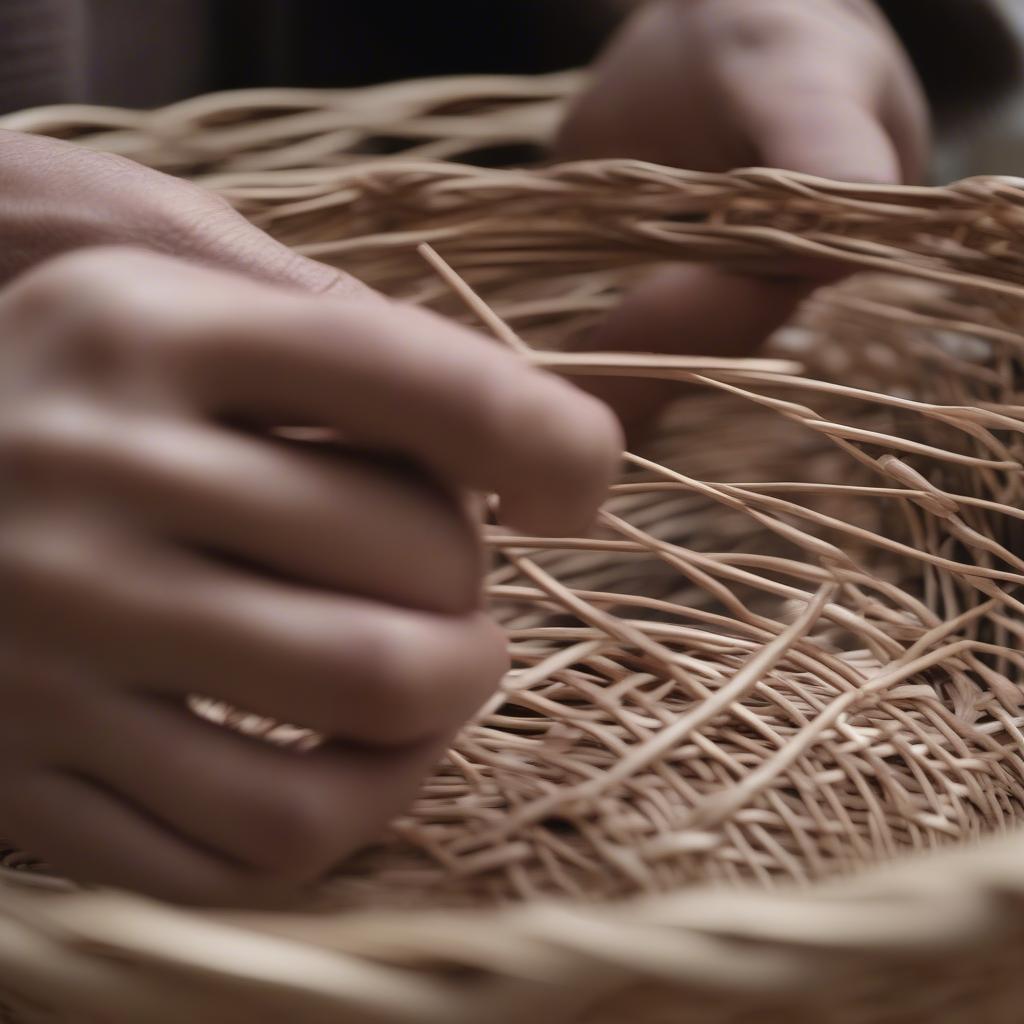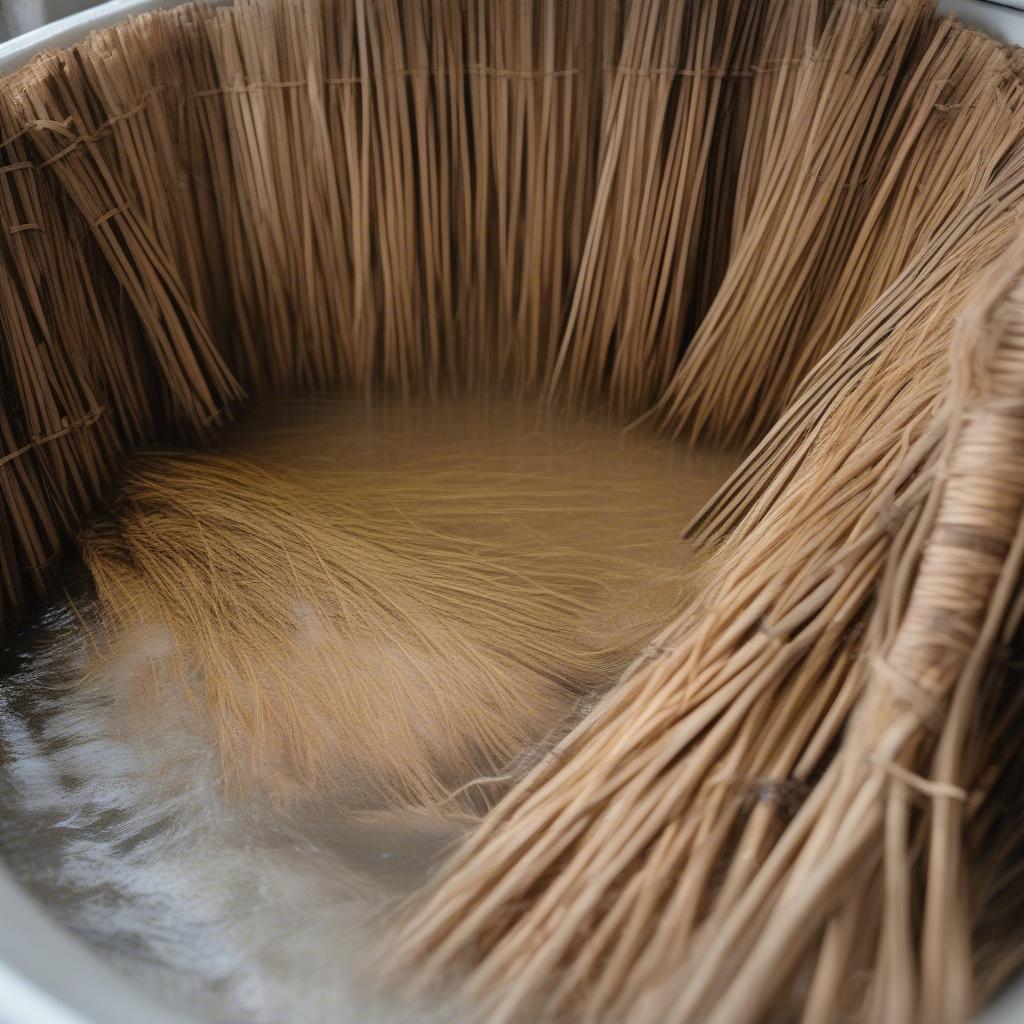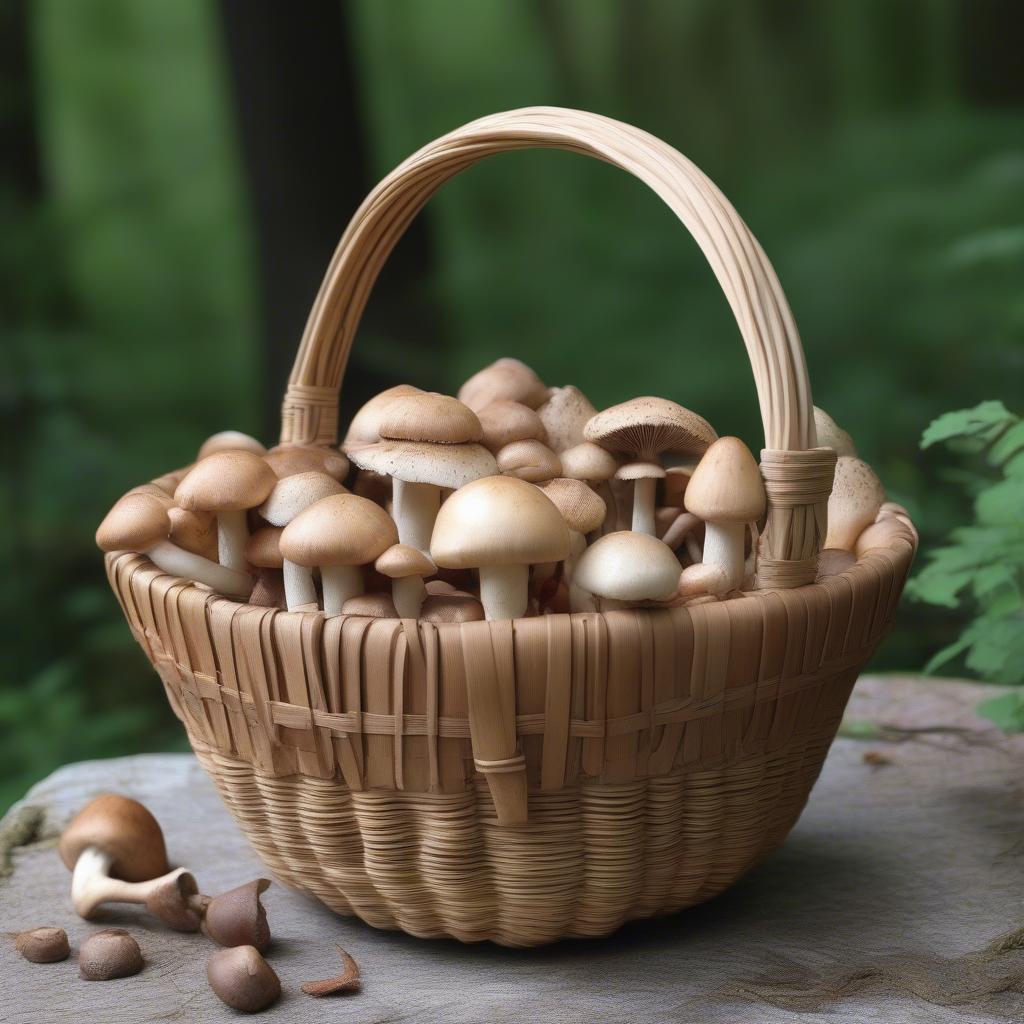Basket Weaving
Weave a Mushroom Basket: A Forager’s Delight
Learning to Weave A Mushroom Basket is a rewarding experience, connecting you with nature and a centuries-old craft. Whether you’re an experienced basket weaver or a complete beginner, crafting a basket specifically designed for foraging mushrooms offers a unique challenge and satisfaction. This guide will equip you with the knowledge and techniques to create your own beautiful and functional mushroom basket.  Weaving a Mushroom Basket with Natural Materials
Weaving a Mushroom Basket with Natural Materials
Choosing the Right Materials for Your Mushroom Basket
The key to a successful mushroom basket lies in selecting appropriate materials. Durability, flexibility, and breathability are essential. Traditionally, natural materials are preferred for their eco-friendly nature and unique aesthetic. Willow, reed, and split oak are popular choices, each offering distinct properties for weaving. Willow is known for its flexibility, allowing for intricate designs, while reed offers strength and durability for heavier loads. Split oak provides a rustic charm and excellent ventilation, crucial for keeping your foraged mushrooms fresh. vintage basket weave pattern ceramic mushroom canisters can inspire you in design and aesthetics.
Considering Ventilation and Durability
Good ventilation prevents moisture buildup, which can spoil delicate mushrooms. Open weaves and breathable materials like split oak are ideal for this purpose. Consider the type of mushrooms you typically forage – heavier varieties may require a sturdier basket made from thicker reeds or even reinforced with additional supports.
Preparing Your Materials for Weaving
Before you begin to weave a mushroom basket, proper preparation is crucial. Soaking your chosen material in warm water softens it, making it pliable and easier to work with. This process also prevents the material from breaking or splitting during the weaving process. The soaking time varies depending on the material – willow typically requires a few hours, while reed may need overnight soaking.
Soaking and Drying Techniques for Optimal Weaving
Proper drying is just as important as soaking. After soaking, allow the material to air dry until it’s damp but not dripping wet. This ensures the material remains flexible enough for weaving while preventing excessive shrinkage later on.  Preparing Willow Reeds for Basket Weaving
Preparing Willow Reeds for Basket Weaving
The Art of Weaving a Mushroom Basket
The actual weaving process involves several techniques, from creating the base to forming the sides and adding a handle. Begin by creating a circular or oval base using a simple weaving pattern. Gradually add more rows, shaping the basket as you go. ceramic basket weave sugar showcases a different application of this pattern, highlighting its versatility.
Mastering the Basic Weaving Techniques
Several basic weaving techniques are commonly used in basketry, including the randing weave, twining weave, and plaiting. Each technique produces a different texture and appearance, allowing you to customize your basket’s design.
What are some basic weaving techniques?
Randing, twining, and plaiting are fundamental basket weaving techniques.
Shaping and Finishing Your Mushroom Basket
As you weave, gradually shape the basket into the desired form. You can create a shallow, wide basket for collecting larger mushrooms or a taller, narrower basket for delicate varieties. 60’s chandelier basket weave can offer some inspiration for different shapes and designs.
Adding a Handle and Reinforcements
A sturdy handle is essential for carrying your foraged treasures. Use a thicker piece of material or even rope to create a comfortable and secure handle. You can also reinforce the rim of the basket to prevent it from fraying or losing its shape.  Finished Mushroom Basket with Handle
Finished Mushroom Basket with Handle
“A well-crafted mushroom basket is more than just a vessel; it’s an extension of the forager’s passion and respect for nature,” says renowned basket weaver, Anya Petrova.
Maintaining Your Mushroom Basket
Proper care ensures your mushroom basket will last for years. After each foraging trip, clean your basket with a soft brush and allow it to air dry thoroughly. Avoid storing it in damp environments to prevent mold and mildew. “Regular cleaning and proper storage are essential for maintaining the beauty and longevity of your handcrafted basket,” advises Petrova.
Conclusion
Weaving a mushroom basket is a journey that connects you to a rich tradition of craftsmanship and the natural world. By choosing the right materials, mastering the basic techniques, and adding your own creative touch, you can create a beautiful and functional basket that will enhance your foraging experience for years to come. Now, go ahead and weave a mushroom basket that reflects your own unique style and foraging needs!
FAQs
- What is the best material for a mushroom basket?
- How long should I soak my weaving materials?
- What are the basic weaving techniques for a mushroom basket?
- How do I add a handle to my mushroom basket?
- How do I care for my mushroom basket?
- Where can I find more resources on basket weaving?
- Can I use synthetic materials for weaving a mushroom basket?
Consider exploring d&d basket weaving and ancient basket weaving nordic for further inspiration and knowledge.
For further assistance, please contact us at Hanoi, Vietnam or Tech Avenue, Suite 12, San Francisco, CA 94105, USA. We have a 24/7 customer support team.
